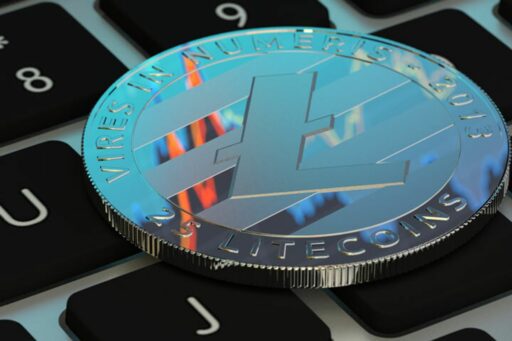With the advent of blockchain technology, crypto tokens have emerged as a revolutionary form of digital asset that can represent various forms of value and utility. Understanding crypto tokens is essential for anyone looking to engage with the burgeoning world of cryptocurrency. This beginner’s guide aims to demystify the nature of crypto tokens, their uses, and how they differ from traditional cryptocurrencies, providing a foundational knowledge for navigating this innovative space.
Key Takeaways
- Crypto tokens are digital representations of assets or interests, built on blockchain technology and serving multiple purposes.
- The creation and distribution of crypto tokens typically occur through Initial Coin Offerings (ICOs), which are crowdfunding mechanisms.
- Crypto tokens can be classified into various types, including utility tokens, security tokens, and non-fungible tokens (NFTs).
- While crypto tokens and cryptocurrencies both utilize blockchain, they differ fundamentally in their purpose and use cases.
- Investing in crypto tokens involves understanding the risks and regulatory challenges, as well as the potential for volatility.
What Are Crypto Tokens?

Defining Crypto Tokens
At the core of the digital economy, crypto tokens serve as the building blocks for various blockchain-based applications and services. Unlike cryptocurrencies, which are primarily designed to function as digital money, crypto tokens can represent a wide array of assets and utilities. They are digital representations of value or rights, managed on a blockchain.
Crypto tokens can be used for a multitude of purposes, including but not limited to:
- Representing ownership or a stake in a project (security tokens)
- Providing access to a specific service or function within a platform (utility tokens)
- Certifying the uniqueness and ownership of digital collectibles (non-fungible tokens or NFTs)
Crypto tokens are versatile instruments that can be tailored to a specific purpose or project, making them a fundamental component of the blockchain ecosystem.
The creation and management of these tokens are underpinned by cryptographic techniques, ensuring security and authenticity. They often come into existence through a process known as an initial coin offering (ICO), which is a fundraising mechanism for new projects.
Different Types of Crypto Tokens
Crypto tokens are diverse and serve various purposes within the blockchain ecosystem. Utility tokens are perhaps the most common, providing users with access to a product or service. For instance, they might grant the holder a certain number of customer loyalty points or entitlement to streaming content on a blockchain-based platform.
Another significant category is security tokens, which represent an investment in external, tradable assets. These tokens are subject to federal laws that govern securities, making compliance a critical consideration for issuers.
Non-fungible tokens (NFTs) have gained immense popularity, representing unique assets like digital art, collectibles, or even real estate. Each NFT has distinct characteristics and ownership rights, making them unlike any other token.
Decentralized finance (DeFi) tokens are integral to the burgeoning DeFi sector, facilitating everything from lending and borrowing to yield farming. Governance tokens empower holders with voting rights within a particular blockchain project, influencing its direction and policy changes.
The versatility of crypto tokens is a testament to the innovative nature of blockchain technology, enabling a wide range of applications and use cases.
Lastly, asset tokens and reward tokens are other forms of crypto tokens, each with their own unique properties and uses within the blockchain space.
Use Cases and Applications
Crypto tokens have paved the way for a multitude of applications that extend far beyond simple financial transactions. The versatility of tokens has led to their adoption in various sectors, creating a new paradigm for how we interact with digital assets. For instance, tokens can represent ownership in a project through security tokens or facilitate decentralized governance via utility tokens.
- Decentralized social networks leverage the power of blockchain to create platforms where users have control over their data.
- Stablecoins enable dollar transfers on the Internet, providing a stable medium of exchange in the volatile crypto market.
- Tokens also play a crucial role in decentralized finance (DeFi), allowing for complex financial operations without traditional intermediaries.
The potential of blockchain and crypto in these use cases is immense, offering unprecedented levels of transparency, security, and efficiency.
From digital collectibles like NFTs to new forms of digital identity, the applications of crypto tokens are continually expanding. They enable new applications in areas such as loyalty programs, digital rights management, and even voting systems. As the technology matures, we can expect to see even more innovative uses for crypto tokens.
The Evolution of Crypto Tokens

The Birth of Blockchain and Tokenization
The inception of blockchain technology marked a pivotal moment in digital finance, introducing a new era of tokenization. Crypto tokens are transactional units created on top of existing blockchains, leveraging the power of smart contracts and decentralized applications to facilitate transactions and operations.
- Smart Contracts: Self-executing contracts with the terms directly written into code.
- Decentralized Applications (DApps): Applications that run on a P2P network of computers rather than a single computer.
- Token Generation Events (TGEs): Also known as Initial Coin Offerings (ICOs), these events are crucial for raising capital and distributing tokens to early adopters.
Tokenization has revolutionized the way we think about asset ownership and investment, enabling the creation of new financial instruments like security tokens. These tokens can represent real-world assets and offer a novel approach to investment and fundraising.
The process of creating and distributing tokens often begins with an ICO, a crowdfunding-like event that serves as a launchpad for many crypto projects. This phase is critical for gathering the necessary funds to support the project’s development and for distributing the initial supply of tokens to investors and early supporters.
Major Milestones in Crypto Token History
The history of crypto tokens is marked by several significant milestones that have shaped the landscape of digital assets. The first recognized ICO and token was Mastercoin, created by J.R. Willet and announced in January 2012. This event is often seen as the genesis of tokenization beyond the original cryptocurrency, Bitcoin.
Following Mastercoin, the ICO boom of 2017 marked a period of rapid growth and innovation. Numerous projects leveraged the ICO model to raise funds and launch their own tokens, leading to a diverse ecosystem of digital assets. This period also saw the rise of Ethereum as a dominant platform for token creation, thanks to its smart contract capabilities.
- 2012: Mastercoin’s ICO introduces the concept of tokenization.
- 2017: The ICO boom leads to a proliferation of new tokens.
- Ethereum’s smart contract functionality enables a new era of token development.
The evolution of crypto tokens reflects the dynamic and innovative spirit of the blockchain community, continuously pushing the boundaries of what is possible with digital assets.
Current Trends in Token Development
The landscape of crypto token development is continuously evolving, with new trends emerging as the technology matures and the market adapts. Token Generation Events (TGEs) have become a popular method for creating and distributing digital assets, often serving as a modern alternative to Initial Coin Offerings (ICOs). TGEs not only facilitate capital raising for blockchain initiatives but also ensure the widespread distribution of tokens to early adopters, fostering the ecosystem’s expansion.
The recent surge in the cryptocurrency market, with a valuation hitting a $2.7 trillion market cap, reflects the growing investor confidence and the mainstream adoption of crypto tokens. This resurgence is indicative of the market’s recovery from previous challenges, such as fraud and price volatility.
The single most important concern about crypto tokens is their use in fundraising, which has historically opened avenues for fraudulent activities. Investors are advised to exercise due diligence when engaging with new token offerings.
As the market matures, the role of crypto tokens in fundraising remains significant. Whitepapers, resembling pitchbooks, outline the token’s purpose, sale process, fund utilization, and investor benefits, providing a blueprint for potential backers.
How Crypto Tokens Work

The Technology Behind Tokens
At the core of crypto tokens is the blockchain technology that enables their existence. Unlike cryptocurrencies, which have their own dedicated blockchains, crypto tokens are built on pre-existing blockchains. These platforms, such as Ethereum, provide the infrastructure necessary for the creation and execution of decentralized applications (dApps) and smart contracts, which are self-executing contracts with the terms of the agreement directly written into code.
The versatility of crypto tokens stems from their ability to represent a digital claim on an asset or a utility within a network. They can be used for a wide range of purposes, from granting access to services to representing ownership of real-world assets.
The process of creating tokens often involves standard templates like the Ethereum ERC-20 or ERC-721 standards, which simplify the development of new tokens. Here’s a brief overview of the types of tokens:
- Utility Tokens: Provide access to services or functionalities; e.g., Ether (ETH).
- Security Tokens: Represent ownership of assets and adhere to regulatory frameworks; e.g., equity in a company.
- Non-Fungible Tokens (NFTs): Unique tokens that cannot be exchanged on a one-to-one basis; often used to represent digital art or collectibles.
Crypto tokens can also serve as investments, store value, or facilitate purchases, expanding their role beyond mere transactional units.
The Process of Creating and Distributing Tokens
The creation and distribution of crypto tokens are pivotal moments in the lifecycle of a blockchain project. Token Generation Events (TGEs) are a common method, marking the birth of new digital assets on a specific blockchain. These events are crucial for raising capital and distributing tokens to early adopters, fueling the ecosystem’s expansion.
Crypto tokens typically emerge from a process involving several key steps:
- Development of the token’s smart contract
- Announcement and marketing of the upcoming token
- Conducting the Initial Coin Offering (ICO) or other fundraising methods
- Distributing the tokens to participants
Built on existing blockchains, tokens utilize smart contracts for transaction management. This process is not only about technical creation but also about strategic distribution to ensure a wide and fair spread of the assets.
The rise of crypto tokens has diversified digital assets, challenging traditional finance with innovative use-cases. Understanding token fundamentals and navigating the evolving landscape are key.
As the tokens transition from ICO to active trading, they become tools for transactions, governance, or utility within their respective ecosystems. The journey from concept to market involves meticulous planning and adherence to regulatory frameworks to ensure a successful launch.
Understanding Initial Coin Offerings (ICOs)
Initial Coin Offerings (ICOs) represent a classic approach to launching new crypto tokens. In an ICO, a startup or crypto project offers new tokens for sale to raise capital, often accepting established cryptocurrencies like Bitcoin or Ethereum as payment. This method allows projects to gather funds swiftly to support their development and growth.
- Decentralized fundraising has also gained traction through Initial Dex Offerings (IDOs), which occur on decentralized exchanges and aim to reduce fraud risks.
- Initial Exchange Offerings (IEOs) provide an alternative, with exchanges offering due diligence and added security for investors.
ICOs are a pivotal element in the crypto ecosystem, enabling projects to kickstart their journey with the necessary financial backing.
Understanding the ICO model is crucial for financial advisors, as it involves regulation and inherent risks that must be considered when advising clients on crypto investments.
Crypto Tokens vs. Cryptocurrencies
The Fundamental Differences
Understanding the fundamental differences between crypto tokens and cryptocurrencies is crucial for any beginner. Cryptocurrencies, like Bitcoin, operate on their own independent blockchains, serving primarily as digital currencies. In contrast, crypto tokens are built on top of existing blockchain platforms and can represent a wide array of assets and utilities.
- Cryptocurrencies:
- Operate on their own blockchain
- Primarily used as digital currency
- Crypto Tokens:
- Built on existing blockchains
- Can represent assets or utilities
While both coins and tokens are forms of digital assets, their underlying structures and intended purposes set them apart significantly. Tokens can facilitate complex operations and represent interests in external assets or services, whereas coins are more narrowly focused on their role as currency.
Comparing Use Cases and Value Propositions
Crypto tokens and cryptocurrencies, while often used interchangeably in casual conversation, serve distinct purposes within the digital asset ecosystem. Crypto tokens are versatile instruments that can represent various forms of value and utility. They are not just a medium of exchange but can embody assets, access rights, or even participation in a specific network or project.
Cryptocurrencies, on the other hand, are primarily designed to function as digital money. Their use cases are more focused on transactions and acting as a store of value. The value proposition of cryptocurrencies is closely tied to their ability to act as an alternative to traditional fiat currencies, with an emphasis on security and decentralization.
The distinction between tokens and cryptocurrencies is crucial for investors and users to understand, as it influences their decision-making process in the blockchain space.
Here’s a comparison of some common use cases for each:
-
Crypto Tokens
- Fundraising through ICOs
- Representing ownership in assets
- Access to platform-specific features
- Governance and voting rights within a project
-
Cryptocurrencies
- Medium of exchange
- Store of value
- Unit of account
While both tokens and cryptocurrencies can be used as investments, their underlying principles and the nature of their applications differ significantly.
How Market Dynamics Differ for Tokens and Cryptocurrencies
The market dynamics of crypto tokens and cryptocurrencies are influenced by their underlying purposes and functionalities. Cryptocurrencies are primarily designed as digital currencies, aiming to facilitate transactions and act as a store of value. In contrast, tokens can serve a multitude of roles within their respective ecosystems, from representing assets to granting access to services or voting rights.
- Cryptocurrencies: Typically have their own blockchain.
- Tokens: Exist on pre-existing blockchains.
Tokens often emerge from an Initial Coin Offering (ICO), where they are sold to raise capital for project development. Post-ICO, the tokens may serve various functions, such as granting holders access to a platform’s features or representing ownership of a digital or physical asset.
The distinction between tokens and cryptocurrencies is not just technical but also impacts how they are traded and valued in the market.
While cryptocurrencies like Bitcoin and Ethereum are widely recognized and used for transactions, tokens may be more niche and tied to the success of the project they represent. This can lead to different risk profiles and investment strategies for market participants.
Navigating the Risks and Concerns of Crypto Tokens

Security and Fraud Concerns
The allure of crypto tokens is often shadowed by the risks associated with security and fraud. Investors must exercise due diligence to avoid falling prey to scams and fraudulent schemes. The Financial Industry Regulatory Authority (FINRA) frequently issues warnings about the potential for fraud in the crypto space, emphasizing the importance of thorough research before investment.
- Always verify the legitimacy of a token offering by researching the team behind it, their business registration, and contact information.
- Be cautious of ICOs that lack transparency or have unclear whitepapers.
- Understand the regulatory environment of your jurisdiction, as some tokens may be classified as securities and require registration.
The cryptocurrency market is maturing, driving the need for comprehensive regulatory frameworks. Balancing investor protection with the facilitation of innovation is crucial for the sustainable growth of the crypto ecosystem.
Regulatory Challenges and Compliance
The regulatory landscape for crypto tokens is complex and varies significantly across different jurisdictions. Regulatory bodies have been issuing alerts and guidance to both investors and exchanges to ensure compliance with existing financial laws. For instance, exchanges may be required to register with authorities if they facilitate fundraising activities, such as Initial Exchange Offerings (IEOs), due to their potential classification as alternative trading systems or broker/dealers.
Compliance with regulations is not just about registration; it’s about understanding the nuances of how crypto tokens are treated under the law in different regions.
Here are some key considerations for compliance:
- Determine if the token needs to be registered based on the jurisdiction. In the U.S., the SEC may consider tokens as securities.
- Investigate the legitimacy of the team behind the ICO, including their business registration and contact information.
- Be cautious of tokens listed on non-regulated exchanges, as they may carry a higher risk of being scams.
It’s crucial for investors to conduct thorough due diligence and for token issuers to navigate the intricate web of regulations to avoid legal repercussions and ensure investor protection.
Assessing Investment Risks and Volatility
Investing in crypto tokens is akin to navigating a digital frontier filled with both opportunities and uncertainties. Understanding the risks and volatility associated with crypto tokens is crucial for any investor. The market is known for its rapid price fluctuations, which can be influenced by a variety of factors including regulatory news, technological advancements, and market sentiment.
Before diving into the crypto token market, it’s essential to recognize the different types of risks involved. Here’s a brief overview:
- Locked Funds: Your investment may not be immediately liquid, especially if it’s tied up in staking or certain ICOs.
- Market Volatility: The value of crypto tokens can change dramatically in a short period of time.
- Regulatory Changes: Legal landscapes can shift, impacting token value and operations.
- Security Risks: Tokens are susceptible to hacking and fraud, which can lead to financial loss.
While diversification can help mitigate some risks, it’s important to balance your portfolio with less volatile investments to avoid overexposure to the crypto market’s inherent unpredictability.
Always conduct thorough research and consider seeking advice from financial professionals before making investment decisions. Remember, the allure of high returns comes with the potential for high losses, and it’s vital to invest only what you can afford to lose.
Conclusion
As we wrap up this beginner’s guide to crypto tokens, it’s clear that they are more than just a digital trend; they represent a significant shift in how we perceive and interact with assets in the digital age. From utility tokens to security tokens and NFTs, the variety and functionality of crypto tokens are vast and multifaceted. While they offer innovative ways to represent ownership and facilitate transactions, it’s important for beginners to approach this space with caution due to the inherent risks and volatility. Always conduct thorough research or consult with financial advisors before participating in token sales or investing in any crypto assets. Remember, understanding the underlying technology and the purpose of each token is crucial in making informed decisions in the ever-evolving world of cryptocurrency.
Frequently Asked Questions
What is a crypto token?
A crypto token is a digital representation of an asset or interest, built on a blockchain. It can represent various assets, utilities, or functionalities and be used for investments, to store value, or to make purchases.
How do crypto tokens differ from cryptocurrencies?
Crypto tokens are specific assets or utilities on a blockchain, while cryptocurrencies are digital representations of value designed to facilitate transactions using blockchain technology.
What are the different types of crypto tokens?
Crypto tokens can be broadly classified into utility tokens, security tokens, and non-fungible tokens (NFTs), each serving different purposes within the cryptocurrency ecosystem.
What is an Initial Coin Offering (ICO)?
An Initial Coin Offering (ICO) is a crowdfunding process where new crypto tokens are created, distributed, and sold to raise funds for developing projects.
What are the main risks associated with crypto tokens?
The main risks include security and fraud concerns, regulatory challenges and compliance issues, and the potential for high investment risks and volatility.
How can I safely invest in crypto tokens?
To safely invest in crypto tokens, conduct thorough research, understand the project’s value proposition, assess the risks, and ensure compliance with regulatory requirements.





